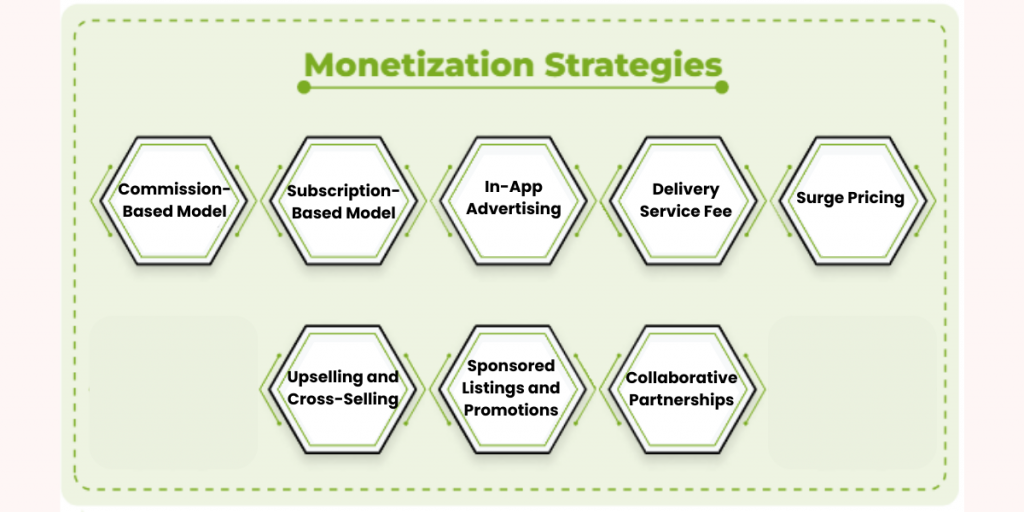How to Monetize Your Delivery App: Revenue Models and Strategies

Quick Summary: Though on-demand delivery apps have become popular and a necessity, have you ever thought about how they make money? How are apps like Uber Eats, TaskRabbit, Instacart, and other leading brands able to generate profits? This blog will guide you on the delivery app monetization methods and strategies to ensure you get the desired ROI.
Do you own an on-demand delivery app? What methods do you use to generate revenue from the app? Did you know that the top on-demand delivery apps use multiple revenue models to earn profits?
If you are a startup willing to enter the on-demand delivery industry, answering these questions is crucial to understanding the revenue models. On the other hand, if you are already in the market, are you using all the right strategies?
On-demand delivery apps can make more money by using revenue models, which offer systematic ways to commercialize their offerings. With these models, apps can now make money in various ways, including commission-based fees, subscription plans, in-app advertising, delivery service fees, surge pricing, upselling, cross-selling, sponsored listings, promotions, and so on.
Further, these apps can tap into many revenue streams, diversify their money sources, and enhance their earning potential by incorporating the right revenue models. It guarantees the app’s financial viability and makes it possible to invest in technological developments, increase the number of users, improve the customer experience, and keep a competitive advantage in the market.
Key Takeaways
- Successful on-demand delivery apps often use multiple revenue models such as commission-based, subscription-based, in-app advertising, delivery service fees, surge pricing, etc.
- Some of the most widely used revenue models include subscription-based, surge pricing, and in-app advertising.
- Upselling and cross-selling models have led to higher sales in the on-demand delivery apps that use these.
- Using revenue strategies based on user data can help brands acquire better and higher profits.
- Startups can initially use just one revenue model and add more as the business grows.
How do delivery businesses make money? As mentioned above, they use several revenue models like advertising, delivery fee, surge pricing, and more. Want to know more? Keep reading the blog to learn in detail about delivery app monetization strategies and start earning profits.
Top Delivery App Monetization Models and Strategies
Whatever industry your business may belong to, the following delivery app monetization models and strategies will help you get better Returns on Investment and boost sales and profits.

1.Commission-Based Model
One of the most popular delivery app monetization models is the commission-based model. It helps businesses earn revenue by charging a percentage of each order that is placed through the app. In this revenue model, the app collaborates with nearby merchants like restaurants, grocers, or retailers in exchange for a commission on each transaction made possible by the app. The app takes a percentage of the order value as a commission when a customer orders through the app.
The model is advantageous to the app and the affiliated companies. The software is a platform that links users with nearby businesses, providing them with the ease of online ordering and delivery. By imposing a fee, the app generates income based on the quantity and cost of transactions carried out on its platform.
For example- Uber Eats charges a commission of 15%-30% depending upon the plan the service provider chooses.

Comments